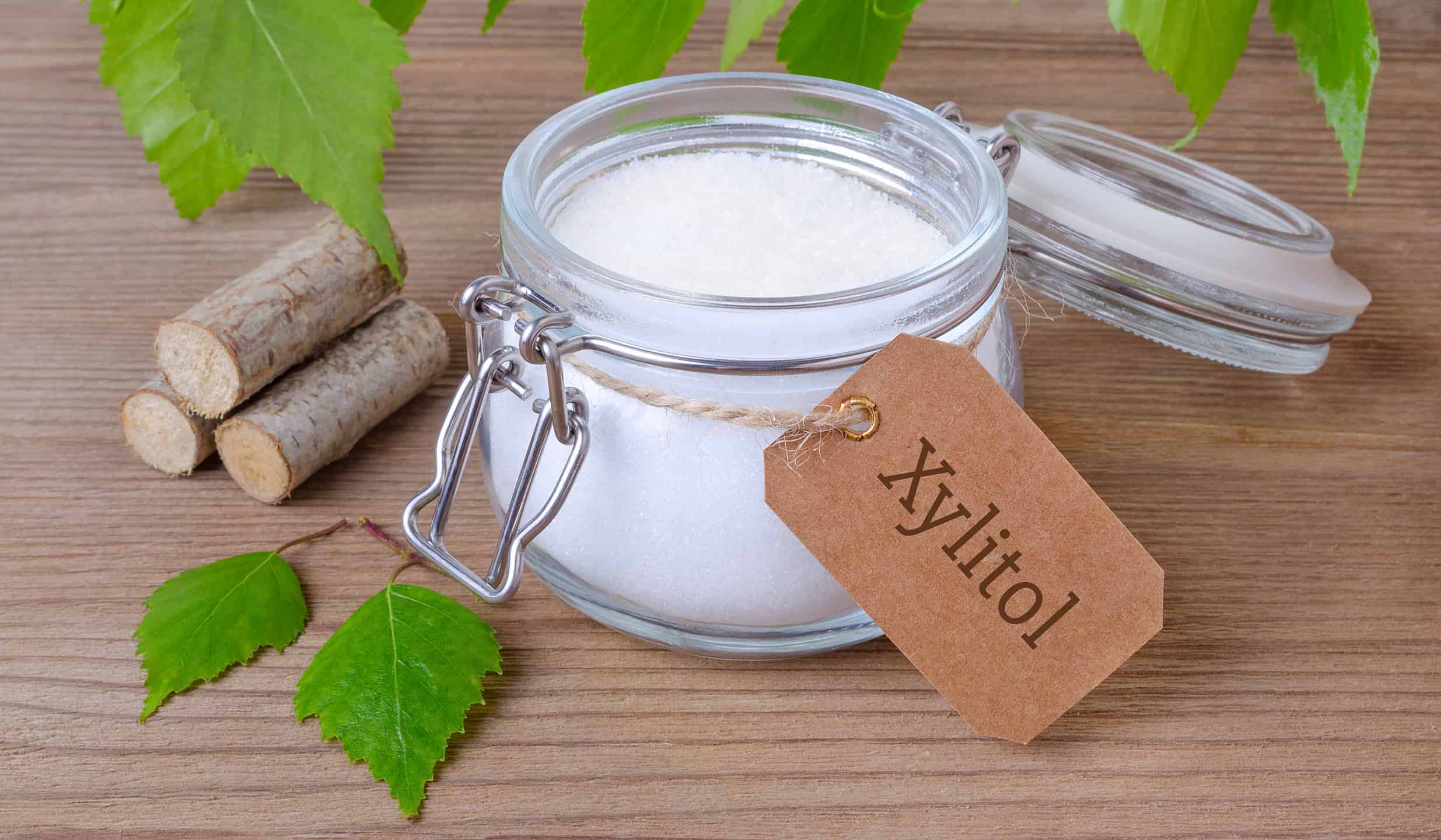Any dog owner knows that if you look away even for a few moments, a dog has found its way to a mouthful of food. In most cases, this is a harmless act resulting in a scolding and missing part of your meal. Despite most causes being harmless, there are some foods your dog should not eat.
We all want the best for our canine friends, and the way to do this is by educating ourselves on what foods produce toxins that can harm dogs. While humans can digest various foods, a dog often can’t. Let’s look at seven human foods your dog should not eat.
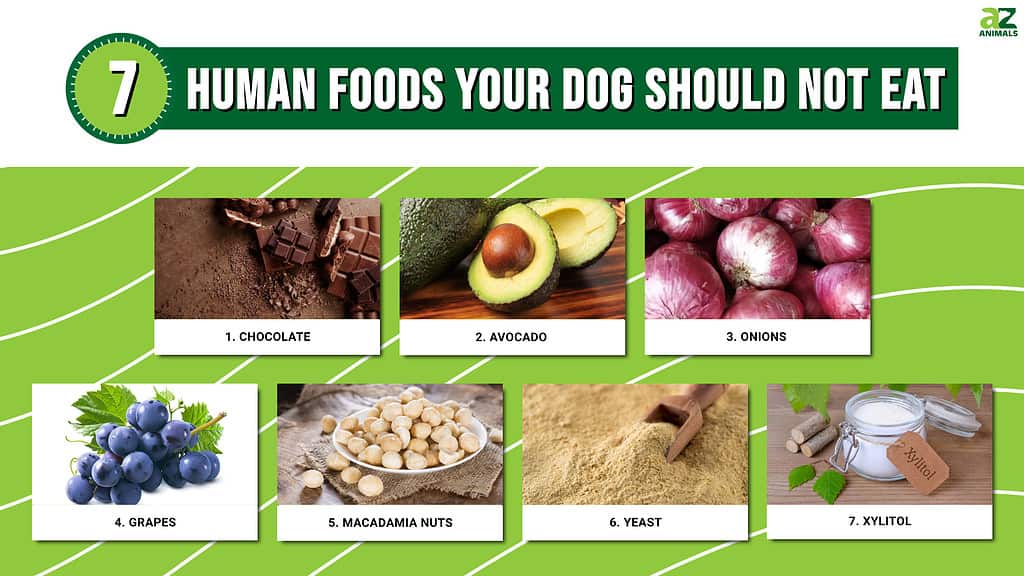
7 Foods Your Dog Should Never Eat
While many foods may seem obvious, a few produce toxins that can trigger aversive effects in a dog’s body. As a pet owner, you’ll want to know the most common yet harmful foods your dog should never eat. Below, we’ll explain how these foods affect your pup.
1. Chocolate

Theobromine and caffeine are not metabolized by dogs as well as they are by humans.
©ivan_kislitsin/Shutterstock.com
You’ve likely already heard that chocolate isn’t good for dogs. But did you know why chocolate shouldn’t be given to dogs?
The reason is that chocolate contains a substance called Methylxanthines theobromine, which is a toxic substance to canines. This chemical acts like a stimulant, stopping a dog’s metabolic processes. Here is a rough estimate of how much chocolate is toxic to dogs based on their body weight:
| Dog’s Weight (lbs) | Amount of Chocolate (oz) |
|---|---|
| <5 lbs | 1 |
| 5-10 | 1.5 |
| 10-20 | 3 |
| 20-40 | 6 |
| 40-60 | 9 |
| 60-80 | 12 |
If too much is ingested, a dog could experience the following symptoms, including:
- Vomiting
- Diarrhea
- Restlessness
- Hyperactivity
- Rapid breathing
- Tremors & seizures
- Increased heart rate
While milk chocolate may not be deadly, it only has a small methylxanthines theobromine dose. On the other hand, dark and baking chocolate is packed with this toxin and will likely result in death if ingested. The same goes for products such as cocoa nibs, cocoa powder, chocolate candy, etc.
Of course, it depends on how much a dog has consumed and their body weight. If you think your dog has consumed any chocolate, you should always contact a pet emergency hospital.
There, they can administer drugs that can help induce vomiting and activate charcoal, which can help absorb the toxin before it affects your dog. They can also help assist in allergic reactions and manage seizures.
2. Avocado
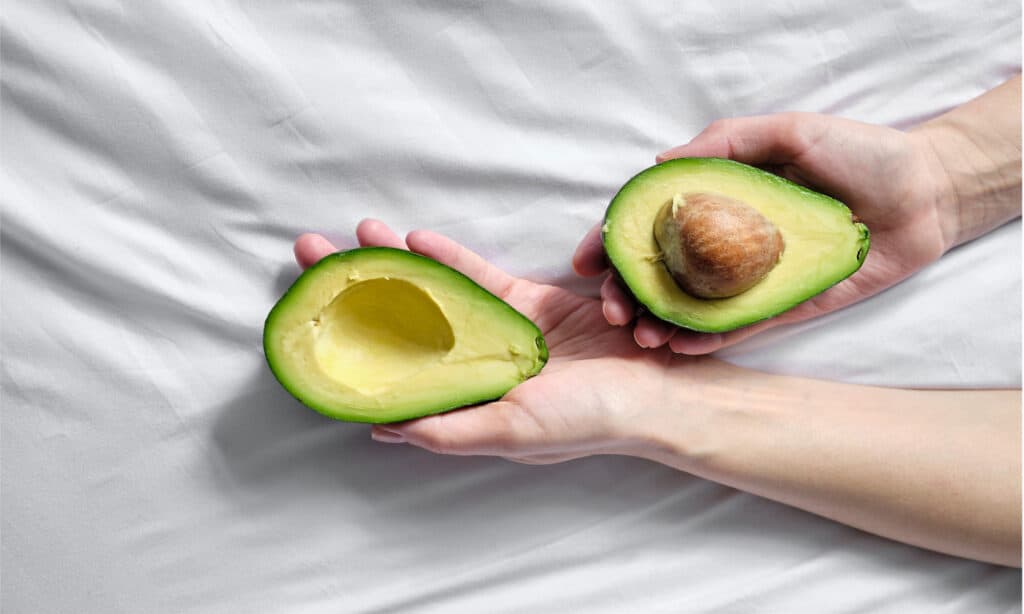
All parts of avocado, including the pits, fruit, and leaves, have a toxin called
Persin. Persin is a strain of fatty acids unique to avocados and poisonous to dogs.
©iStock.com/Iuliia Pilipeichenko
Many people believe that only the pits of avocados are toxic. However, that’s not entirely true, according to the American Kennel Club (AKC). All parts of avocado, including the pits, fruit, and leaves, have a toxin called Persin. Persin is a strain of fatty acids unique to avocados and poisonous to dogs.
While Avocados can be a great source of healthy fats for your dog, the aversive side effects aren’t worth the risk. When your pup eats enough of this chemical, it can be deadly. So, even if avocados have plenty of healthy fats, there are better alternatives, including salmon, coconut oil, and eggs.
Although, you may hear a dog owner claim that their pup is fine after ingesting avocado. The owner isn’t lying, as some dog breeds have a naturally higher tolerance, making the Persin less effective. Now, that doesn’t mean that avocado is still healthy for your dog. There are still risks if a dog consumes too much Persin.
Symptoms may include:
- Vomiting
- Diahrrea
- Difficulty breathing
- Pancreatitis
- Fluid build-up
In extreme cases, a dog may end up dying due to a Persin overdose. So, it’s important not to take the risk. If your dog has consumed avocado, you should bring your dog to a vet to get treatment.
3. Onions

Onions have a chemical called N-propyl disulfide which is extremely toxic to dogs.
©Yeti studio/Shutterstock.com
Onion is also another food your dog should not eat. Onions have a chemical called N-propyl disulfide which is extremely toxic to dogs. The issue is that onions often don’t absorb fast, nor is the chemical deadly if only a bit is consumed.
However, if enough is ingested, the chemical will start interfering with a dog’s red blood cells. N-Propyl disulfide will start to cause oxidative damage and, if left untreated, will turn into hemolytic anemia.
Hemolytic anemia is when the red blood cells begin to get destroyed. The more N-propyl disulfide in the body, the more red blood cells deteriorate. When this happens, dogs may experience these symptoms:
- Weakness
- Lethargy
- Pale gums
- Rapid heart rate
- Difficulty breathing
It should be noted that onions and other plants found in the Allium family will be toxic to dogs. This includes garlic, shallots, green onions, and chives. Any type of these plants will cause serious damage to your dog. This includes powders, cooked, raw, etc.
4. Grapes

Dogs may experience acute kidney injury or failure if they eat grapes in a high enough amount.
©Tim UR/Shutterstock.com
Grapes, as well as raisins, are extremely toxic to dogs. The toxin responsible for this was discovered by the ASPCA Poison Control Center (APCC) and is called Tartaric Acid. Tartaric acid is a substance that naturally occurs in a handful of fruits.
Dogs who consume large amounts of tartaric acid will have side effects. Some of these include vomiting, diarrhea, and abdominal pain. Others include loss of appetite, dehydration, and lethargy.
Dogs may experience acute kidney injury or failure if eaten at a high enough amount. While not all dogs are sensitive to Tartaric acid, many will still get aversive side effects from the toxin. Hence why some dog owners report that their dog is fine eating a few grapes, while others are not.
However, you should never give your dogs grapes, even if one or two does not harm it. Even if the signs aren’t instant, over time, a dog can start to develop kidney failure, which can be lethal. The best way to prevent this is never to give them grapes and take them to the vet if they have eaten some.
5. Macadamia Nuts
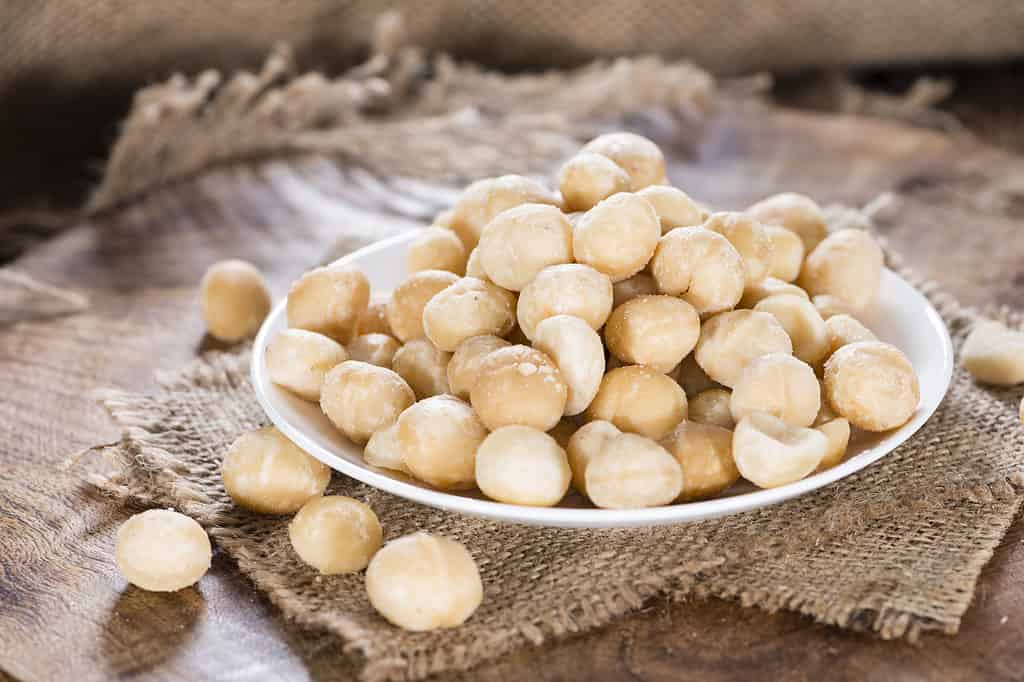
The amount of macadamia nuts a dog can eat before it’s a serious problem is about one nut per 2.2 pounds.
©HandmadePictures/Shutterstock.com
Macadamia nuts also contain a toxin that is harmful to dogs, but it’s unknown. Scientists are still testing for the toxin and why dogs react to it. However, there is some speculation that the toxin interferes with a dog’s nervous system.
A small amount of macadamia nuts can be very deadly. Symptoms include vomiting, tremors, hyperthermia, and weakness in the legs. It can also cause seizures and muscle stiffness. However, symptoms are delayed by 12 hours after ingestion.
If your dog has ingested any amount of macadamia nuts, it’s best to contact a vet immediately. They can help manage symptoms before they affect your dog’s nervous system. Treatment may include inducing vomiting, administering activated charcoal, and preventative care.
6. Yeast

A
dog eating
a large amount of yeast will cause bloating as it expands. This can cause many issues, including abdominal pain and bloating.
©Fascinadora/Shutterstock.com
Yeast as an ingredient isn’t toxic to dogs, but if enough is consumed, it can lead to serious injuries or even death. There are two main reasons why yeast is so deadly, one being that it expands, and the other is that it has alcohol in it.
For example, when yeast is put into flour, it expands over time. A dog eating a large amount of yeast will cause bloating as it expands. This can cause many issues, including abdominal pain and bloating.
Next, the yeast will then be absorbed into the dog’s digestive system as alcohol is produced. The issue is that as yeast ferments, it can be absorbed into the dog’s bloodstream and cause alcohol toxicity. A dog will then start to exhibit drunkenness which causes disorientation, lethargy, and respiratory failure.
That being said, even the smallest amounts of yeast can cause issues for a dog. This includes yeast products like bread, beer, soy sauce, dough, etc. If your dog has eaten yeast, it’s best to seek the guidance of a veterinarian.
7. Xylitol
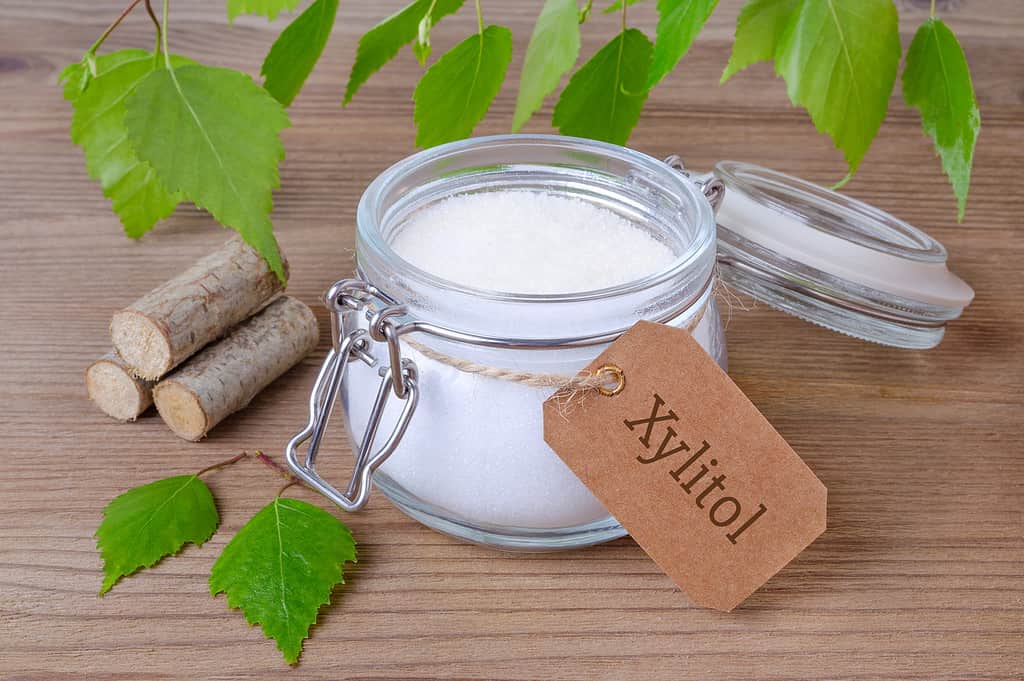
A small amount of Xylitol is enough to kill a dog.
©nadisja/Shutterstock.com
Xylitol is an ingredient mainly used to substitute sweetness in foods. It’s mainly found in sugar-free products, which makes it hard to spot. While Xylitol is okay for humans to eat, it’s extremely toxic to dogs. A small amount is enough to be life-threatening and can cause serious damage to the pancreas.
When a dog digests Xylitol, it will start a process of insulin release, which drops blood sugar levels. This is what is known as hypoglycemia. Once this process begins, a dog may experience lethargy, seizures, and comas.
If left untreated, a dog can even begin to have liver damage, which can be deadly. A small amount of Xylitol is enough to kill a dog. This is as small as 50 milligrams per body weight. So, it’s best to seek help immediately if your dog has consumed it.
What to Do If Your Dog Consumes Food It Should Not Eat
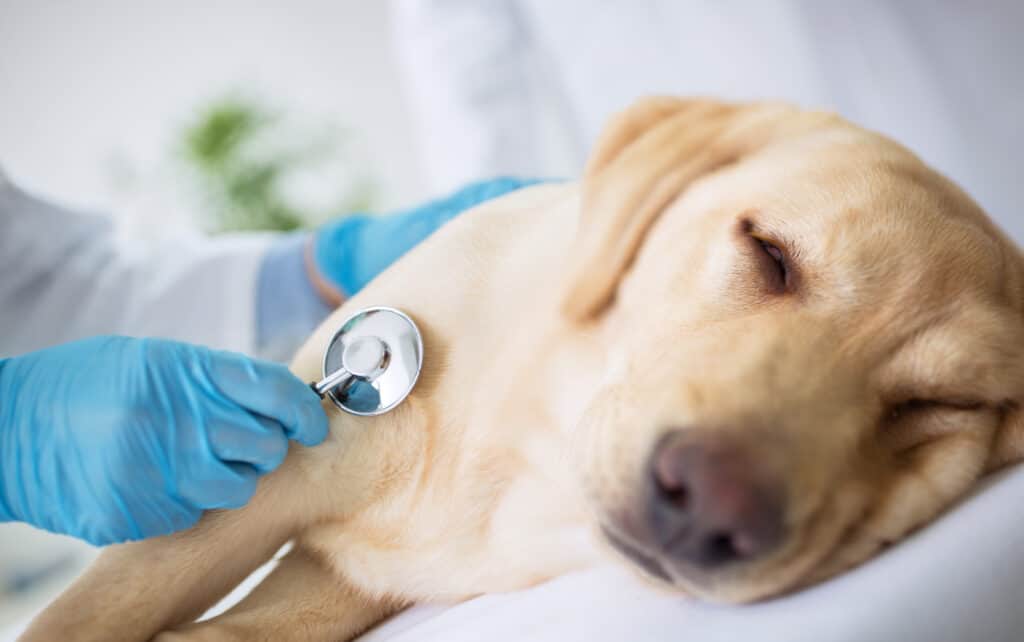
If your dog is experiencing symptoms, immediately visit an emergency animal hospital.
©didesign021/Shutterstock.com
As a pet owner, it can be frightening when your dog consumes harmful food. Your canine doesn’t know what is and isn’t toxic to them, so storing harmful foods away from where they can reach is important. However, we know it only takes a second before your dog may snag a bite of something it’s not supposed to.
If your dog has eaten something toxic, there are steps you can take to help ensure that they aren’t harmed. Let’s take a look at what you can do.
Contact Vet & Emergency Services
Whether it is just a small bite, you should always make time to call your local veterinarian. Not only can they help ease your worries, but they can notify you what your next steps should be. In most cases, many vets recommend that you monitor your dog and watch for symptoms.
If your dog is experiencing symptoms, immediately visit an emergency animal hospital. This is because there is only a small window from when symptoms start to internal damage.
An emergency hospital will have all the necessary tools to help keep your dog alive. While most pet owners hesitate to take their dogs in, it’s always better to be safe than sorry.
Induce Vomiting
If it’s been less than an hour, you will want to get your dog to throw up. The American Kennel Club recommends using hydrogen peroxide to help induce vomiting. You’ll want to use a three percent solution.
| Dog’s Weight (lbs) | Hydrogen Peroxide (ml) |
|---|---|
| <10 lbs | 2.5 |
| 10-25 | 5-10 |
| 25-50 | 10-15 |
| 50+ | 15-45 |
Once a dog has absorbed the Hydrogen Peroxide, it will vomit after 10-15 minutes. They will continue to vomit for 45 minutes or more as their digestive tract removes any remaining chemicals.
You should only use this method if your dog has just eaten the food. If time has passed, they may have already digested the food, inducing vomiting would just add to their pain. Do not administer hydrogen peroxide if the dog is vomiting, lethargic, or comatose.
Monitor Your Dog
After calling the vet, keep an eye on your dog to ensure symptoms don’t worsen. If a dog starts shaking, vomiting, or being extremely lethargic, you should take them to the emergency vet. Otherwise, just continue to monitor them and track their progress.
If their symptoms worsen over time, then take them in.
Conclusion
Toxic foods can cause a whole host of problems for your pup. This is why storing these seven human foods your dog should not eat safely away is essential.
As a dog owner, you must understand what foods are beneficial to your dog and which can do harm. Generally, it’s best to avoid feeding a dog any human food until you know it’s safe. That way, you can prevent scary experiences.
Summary of 7 Human Foods Your Dog Should Not Eat
| # | Food Dogs Shouldn’t Eat |
|---|---|
| 1 | Chocolate |
| 2 | Avocado |
| 3 | Onions |
| 4 | Grapes |
| 5 | Macadamia Nuts |
| 6 | Yeast |
| 7 | Xylitol |
Ready to discover the top 10 cutest dog breeds in the entire world?
How about the fastest dogs, the largest dogs and those that are -- quite frankly -- just the kindest dogs on the planet? Each day, AZ Animals sends out lists just like this to our thousands of email subscribers. And the best part? It's FREE. Join today by entering your email below.
Thank you for reading! Have some feedback for us? Contact the AZ Animals editorial team.

